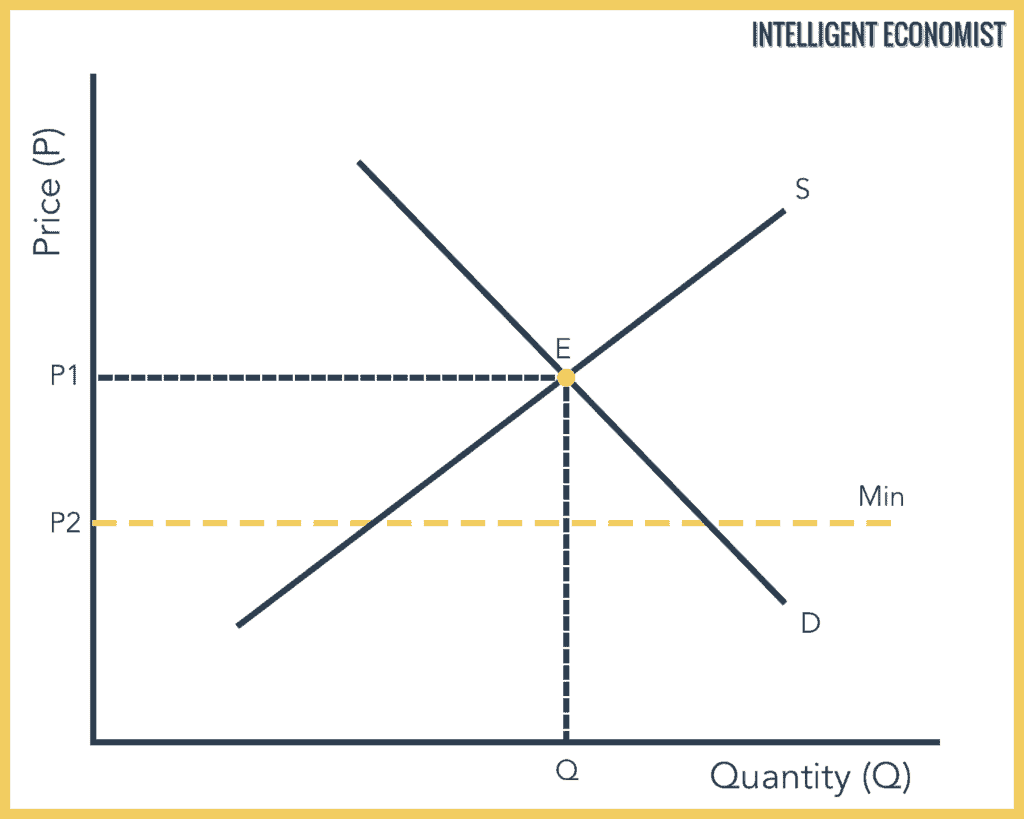A price floor is an established lower boundary on the price of a commodity in the market.
What is a price floor and what are its economic effects.
Types of price floors 1.
The equilibrium price commonly called the market price is the price where economic forces such as supply and demand are balanced and in the absence of external.
A price floor or a minimum price is a regulatory tool used by the government.
A price floor is a government or group imposed price control or limit on how low a price can be charged for a product good commodity or service.
More specifically it is defined as an intervention to raise market prices if the government feels the price is too low.
However price floor has some adverse effects on the market.
The most common price floor is the minimum wage the minimum price that can be payed for labor.
Price floor is enforced with an only intention of assisting producers.
A price floor is the lowest legal price a commodity can be sold at.
Price floor has been found to be of great importance in the labour wage market.
Government enforce price floor to oblige consumer to pay certain minimum amount to the producers.
Price floor is a situation when the price charged is more than or less than the equilibrium price determined by market forces of demand and supply.
Governments usually set up a price floor in order to ensure that the market price of a commodity does not fall below a level that would threaten the financial existence of producers of the commodity.
Government set price floor when it believes that the producers are receiving unfair amount.
By observation it has been found that lower price floors are ineffective.
Price floors are used by the government to prevent prices from being too low.

